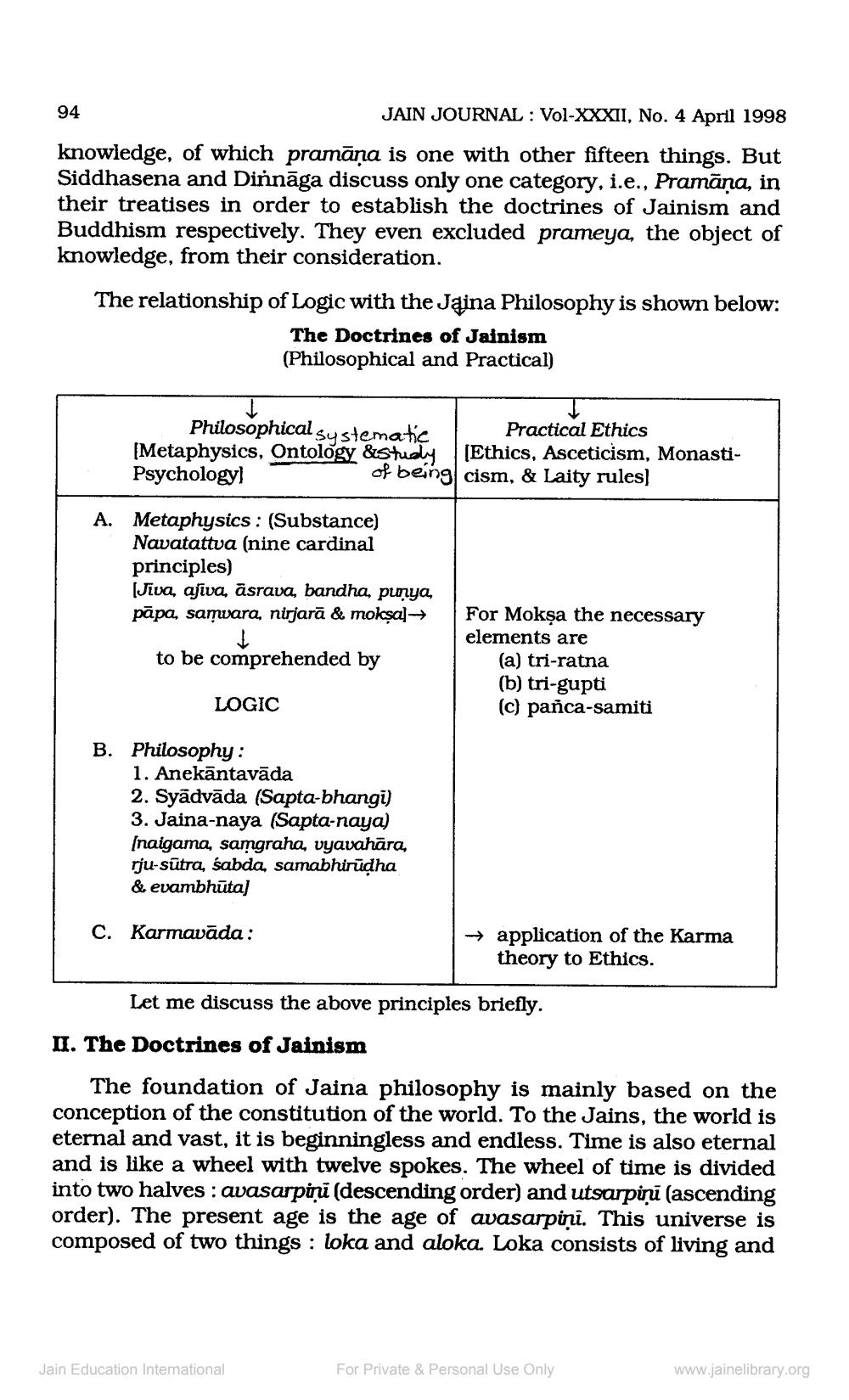________________
JAIN JOURNAL: Vol-XXXII, No. 4 April 1998
knowledge, of which pramāņa is one with other fifteen things. But Siddhasena and Dinnaga discuss only one category, i.e., Pramāņa, in their treatises in order to establish the doctrines of Jainism and Buddhism respectively. They even excluded prameya, the object of knowledge, from their consideration.
94
The relationship of Logic with the Jaina Philosophy is shown below:
The Doctrines of Jainism (Philosophical and Practical)
Philosophical systematic
Practical Ethics
[Metaphysics, Ontology &study [Ethics, Asceticism, MonastiPsychology] of being cism, & Laity rules]
A. Metaphysics: (Substance) Navatattva (nine cardinal principles)
[Jiva, ajiva, asrava, bandha, punya, pāpa, samvara, nirjarā & mokṣal→→
↓
to be comprehended by
LOGIC
B. Philosophy:
1. Anekāntavāda
2. Syadvāda (Sapta-bhangi) 3. Jaina-naya (Sapta-naya) [naigama, samgraha, vyavahāra, rju-sutra, sabda, samabhiruḍha & evambhūta]
C. Karmavāda:
For Mokṣa the necessary elements are
(a) tri-ratna
(b) tri-gupti (c) pañca-samiti
→ application of the Karma theory to Ethics.
Let me discuss the above principles briefly.
Jain Education International
II. The Doctrines of Jainism
The foundation of Jaina philosophy is mainly based on the conception of the constitution of the world. To the Jains, the world is eternal and vast, it is beginningless and endless. Time is also eternal and is like a wheel with twelve spokes. The wheel of time is divided into two halves: avasarpini (descending order) and utsarpiņi (ascending order). The present age is the age of avasarpini. This universe is composed of two things: loka and aloka. Loka consists of living and
For Private & Personal Use Only
www.jainelibrary.org




